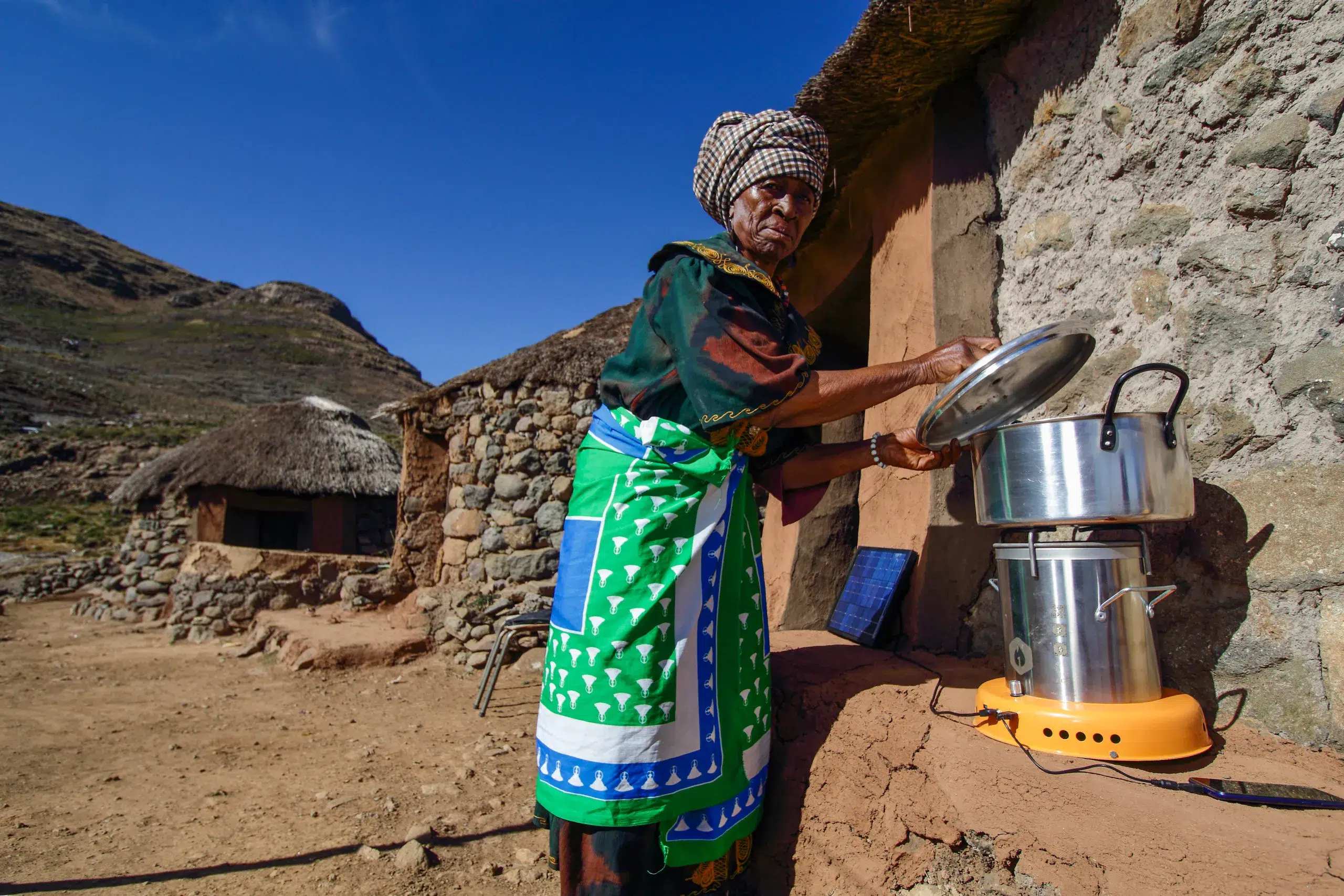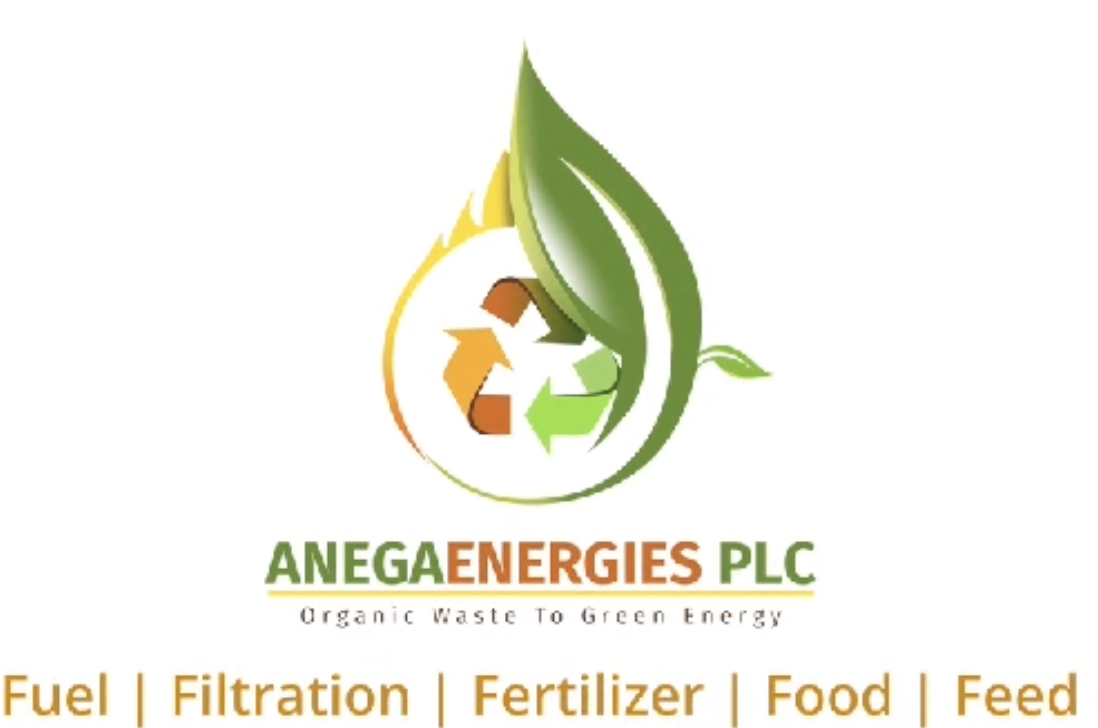Green Cooking
What is Green Cooking?
We define Green Cooking as cooking with high performing forced draft GASIFIER COOKSTOVES fueled with processed solid biomass. This fuel must perform well in the cook stove and has to be produced from sustainable sources. Examples for sustainable processed biomass are PELLETS, made from agricultural or woody residues, dried and sieved wood chips from invasive bushes or wood residues and shells from nuts or palm kernels.

A Green Cooking project must make sure the end users are supplied with both, the stove and the fuel. The end users can be households as well as institutional users as kitchens for schools and restaurants.
Why Green Cooking?
The universal access to clean cooking in general is an important component to achieve many of the Sustainable Development Goals (SDGs) that were agreed and adopted by all the United Nations Member States in 2015 (explaining the SDG contributions in another window).
According to the new Tracking SDG 7 Report (Affordable and clean energy), some progress has been made in the last 10 years. But despite this progress, 2.3 billion people still rely on polluting fuels and technologies. Current trends suggest that in 2030 1.9 billion people will remain without access. Alarmingly in Sub-Saharan Africa population growth has outpaced the limited gains in clean cooking access, increasing the number to almost 1 billion in 2021 and rising further.
We think Green Cooking has an important role to play to make clean and modern energy cooking services accessible, especially in Sub-Saharan Africa because it is among the most affordable solutions and has considerable benefits in terms of stimulating the development of a local sustainable fuel supply economy.
Green Cooking projects qualify as “Modern Energy Cooking Services” (MECS) in most contexts. The term MECS has been introduced by the World Banks Energy Sector Management Assistance Program (ESMAP) in consultation with the Clean Cooking Alliance and other partners. It is defined as performing well in all six attributes of the underlying Multi-Tier Framework.
Advantages of Green Cooking
Affordability depends on various factors including:
- Fuel Cost Efficiency (the cost of fuel per unit of delivered energy)
- Initial Investment
- Resilience to Fuel Price Fluctuations
- Accessibility for Small-Scale Purchases
This combination of low fuel costs and high efficiency of stoves results in a significantly lower cost per unit of delivered energy compared to both traditional charcoal cooking and other clean cooking solutions.
This is confirmed by recent research from Annelise Gill-Wiehl and Daniel M. Kammen of UC Berkeley that have recently proposed an “Affordability Index” in a comment for Nature Energy after conducting a literature review a year earlier. They triangulate many aspects of affordability and come to the conclusion that Green Cooking Solutions (Tier 4 gasifier stoves with pellets) are the most affordable modern cooking solution.
The recently published report of the Energy Sector Management Assistance Program (ESMAP) “Unlocking Clean Cooking Pathways – A Practitioners Keys to Progress” highlights pellet-fed gasifier stoves as a “promising technology for overcoming the affordability challenges” and also states that “the economics of pellet production are also encouraging”.
Availability is a prerequisite for the use of green cooking options and presents a chicken and egg problem: without suitable cookstoves, there is no point in selling pellets, but who will buy an expensive cookstove if there is no pellet market?
There are ways to overcome this issue. The ‘Island’ approach is based on the concept of establishing small areas where efforts for market development are focused, promoting both fuel and cookstove sales. A related approach is to combine stove sales with fuel sales, at least temporarily in the hands of one economic operator.
Finally, pellet production can be linked to industrial users or export markets that consume the majority of fuel, allowing the gradual development of the cookstove market. Relying on export markets is only possible if excellent logistic facilities and short distances between production and ports are available.
Green cooking projects represent a significant leap forward in the pursuit of environmentally friendly cooking solutions with biomass. The exceptional improvement in both emissions and efficiency is due to the combination of upgraded fuel and innovative stove technology.
Pelletization results in a dry and homogenous dense fuel that is very well suited for use in a gasifying cookstove. This type of cookstove converts the solid fuel into a gas that is subsequently burned using a forced, preheated flow of air. This principle leads to extremely clean combustion and a highly efficient use of the generated heat.
Green cooking can also be realized with other forms of homogenized dry biomass fuels, such as dried and sieved wood chips or various crushed and sieved nutshells. In this case, the size of the gasifier must be increased due to the lower density of the fuel.
Pellets as solid fuel have obvious safety advantages, especially when compared to LPG. In terms of convenience, the main advantage over charcoal and firewood is the short startup time, which allows for significantly faster cooking of quick meals.
One issue stove manufacturers are still working on is the short cooking time (usually 40-60 minutes, then the cookstove needs refueling) and the limited control over fire intensity.
Another important consideration is that gasifying cookstoves operate quite differently compared to charcoal stoves, and users must be carefully educated on how to light and operate the stove. Network marketing methods could be a good way to establish peer-to-peer education as well as effective distribution.
Green Cooking is a fundamental component of a sustainable green economy. It helps reduce deforestation and forest degradation resulting from charcoal and firewood production and contributes to achieving several sustainable development goals.
Pellets made from residual biomass are carbon neutral since the plant material absorbed CO2 from the atmosphere during its growth. Allowing this plant material to decompose would lead to similar CO2 emissions as using it as fuel. Additionally, when biomass is landfilled, as is sometimes the case with bagasse, a residue from sugar cane processing, it can result in methane emissions, an even more potent greenhouse gas. Finally, some advocates of gasification cookstoves propose collecting the charcoal left in the stove after combustion and placing it in the soil to create a carbon sink.
An important advantage of carbon neutrality is the potential to generate and sell carbon credits by offsetting greenhouse gas emissions. Green Cooking Projects typically employ the most precise methodology for quantifying emission reductions, according to recent research from UC Berkeley’s Carbon Trading Project.
In contrast to imported fossil fuels pellets create new value chains that generate numerous livelihoods related to biomass supply, processing, fuel distribution, as well as stove production and marketing.
Since residual biomass may not be available everywhere and is limited, purpose-grown crops of fast-growing grasses, such as elephant grass or Napier grass, can provide the needed biomass and additional income for farmers.
Producing, trading and distributing pellets can support the same jobs as charcoal, and the same applies to the manufacturing of cookstoves. Gasifying cookstoves are simple enough to be produced or at least assembled locally, and marketing these stoves will also create jobs for a significant number of people.





